Roof exhausts can be used in a variety of locations. A few examples where these can be used are: manufacturing and assembly plants, warehouses, commercial kitchens, garages, farms, mine/oil/gas operations, paint spray booths and welding booths, abrasive blasting rooms, schools, medical centers, and mechanical rooms.
Roof Exhaust Fans
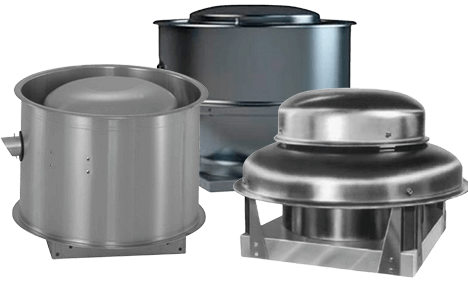
Roof Exhaust
Keep Cool, Stay Efficient
Roof Exhaust
Keep Cool, Stay Efficient






How Can We Help?
HVACDirect.com offers a wide selection of in-stock wholesale Roof Exhaust Fans ready to ship in bulk. We also offer custom Roof Exhaust Fans fit for any project. Get expert advice today when you call.
Call Now and Get a Free Quote on Custom Roof Exhaust Fans Today! 1-888-295-2009
Subcategories
-
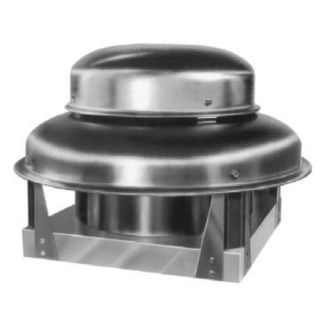
 US Fan 8" Down Blast Roof Exhaust Fan Direct Drive, 1725 RPM 1/10 HP 120 Volts, 1 PhaseModel: PRN080-.1-1P$671.00
US Fan 8" Down Blast Roof Exhaust Fan Direct Drive, 1725 RPM 1/10 HP 120 Volts, 1 PhaseModel: PRN080-.1-1P$671.00 -

 US Fan 10" Down Blast Roof Exhaust Fan Direct Drive, 1550 RPM 1/10 HP 120 Volts, 1 PhaseModel: PRN110-.1-1P$682.00
US Fan 10" Down Blast Roof Exhaust Fan Direct Drive, 1550 RPM 1/10 HP 120 Volts, 1 PhaseModel: PRN110-.1-1P$682.00 -
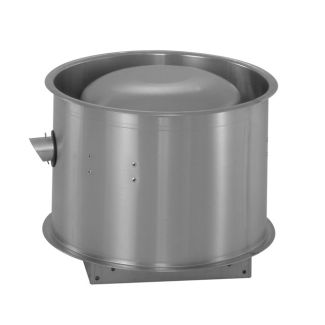
 SAVE $322.20US Fan 8" Upblast Restaurant Grease Roof Exhaust Wall Fan, Direct Drive, 1600 RPM, 1/10 HP, 120 Volts, 1 PhaseModel: PDURG080-.1-1PWas $1,038.20 Your Low Price Special Price $716.00
SAVE $322.20US Fan 8" Upblast Restaurant Grease Roof Exhaust Wall Fan, Direct Drive, 1600 RPM, 1/10 HP, 120 Volts, 1 PhaseModel: PDURG080-.1-1PWas $1,038.20 Your Low Price Special Price $716.00 -

 US Fan 13" Downblast Roof Exhaust Fan Direct Drive, 1625 RPM, 1/3 HP, 120 Volts, 1 PhaseModel: PRN126E-.33-1P$751.00
US Fan 13" Downblast Roof Exhaust Fan Direct Drive, 1625 RPM, 1/3 HP, 120 Volts, 1 PhaseModel: PRN126E-.33-1P$751.00 -

 US Fan 12" Downblast Roof Exhaust Fan Direct Drive, 1725 RPM, 1/3 HP, 120 Volts, 1 PhaseModel: PRN118E-.33-1P$801.00
US Fan 12" Downblast Roof Exhaust Fan Direct Drive, 1725 RPM, 1/3 HP, 120 Volts, 1 PhaseModel: PRN118E-.33-1P$801.00 -

 SAVE $368.10US Fan 10" Upblast Restaurant Grease Roof Exhaust Wall Fan Direct Drive, 1630 RPM, 1/10 HP, 120 Volts, 1 PhaseModel: PDURG100-.1-1PWas $1,186.10 Your Low Price Special Price $818.00
SAVE $368.10US Fan 10" Upblast Restaurant Grease Roof Exhaust Wall Fan Direct Drive, 1630 RPM, 1/10 HP, 120 Volts, 1 PhaseModel: PDURG100-.1-1PWas $1,186.10 Your Low Price Special Price $818.00 -
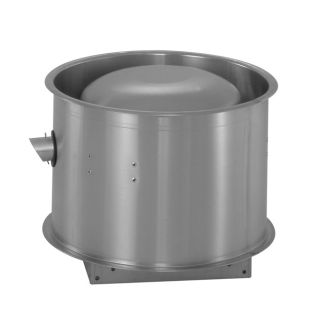
 SAVE $381.15US Fan 11" Upblast Restaurant Grease Roof Exhaust Wall Fan Direct Drive, 1550 RPM, 1/10 HP, 120 Volts, 1 PhaseModel: PDURG110-.1-1PWas $1,228.15 Your Low Price Special Price $847.00
SAVE $381.15US Fan 11" Upblast Restaurant Grease Roof Exhaust Wall Fan Direct Drive, 1550 RPM, 1/10 HP, 120 Volts, 1 PhaseModel: PDURG110-.1-1PWas $1,228.15 Your Low Price Special Price $847.00 -

 US Fan 14" Downblast Roof Exhaust Fan Direct Drive, 1725 RPM, 1/2 HP, 120 Volts, 1 PhaseModel: PRN135G-.5-1P$855.00
US Fan 14" Downblast Roof Exhaust Fan Direct Drive, 1725 RPM, 1/2 HP, 120 Volts, 1 PhaseModel: PRN135G-.5-1P$855.00 -

 US Fan 16" Downblast Roof Exhaust Fan Direct Drive, 1100 RPM, 1/3 HP, 120 Volts, 1 PhaseModel: PRN163F-.33-1P$859.00
US Fan 16" Downblast Roof Exhaust Fan Direct Drive, 1100 RPM, 1/3 HP, 120 Volts, 1 PhaseModel: PRN163F-.33-1P$859.00 -

 SAVE $392.40US Fan 12" Upblast Restaurant Grease Roof Exhaust Wall Fan Direct Drive, 1680 RPM, 1/4 HP, 120 Volts, 1 PhaseModel: PDURG120-.1-1PWas $1,264.40 Your Low Price Special Price $872.00
SAVE $392.40US Fan 12" Upblast Restaurant Grease Roof Exhaust Wall Fan Direct Drive, 1680 RPM, 1/4 HP, 120 Volts, 1 PhaseModel: PDURG120-.1-1PWas $1,264.40 Your Low Price Special Price $872.00 -

 US Fan 17" Downblast Roof Exhaust Fan Direct Drive, 1075 RPM, 1/3 HP, 120 Volts, 1 PhaseModel: PRN171F-.33-1P$884.00
US Fan 17" Downblast Roof Exhaust Fan Direct Drive, 1075 RPM, 1/3 HP, 120 Volts, 1 PhaseModel: PRN171F-.33-1P$884.00 -

 US Fan 15" Downblast Roof Exhaust Fan Direct Drive, 1625 RPM, 1/2 HP, 120 Volts, 1 PhaseModel: PRN145G-.5-1P$901.00
US Fan 15" Downblast Roof Exhaust Fan Direct Drive, 1625 RPM, 1/2 HP, 120 Volts, 1 PhaseModel: PRN145G-.5-1P$901.00 -

 SAVE $552.60US Fan 14" Upblast Restaurant Grease Roof Exhaust Wall Fan Direct Drive, 1725 RPM, 1/2 HP, 120 Volts, 1 PhaseModel: PDURG135-.1-1PWas $1,780.60 Your Low Price Special Price $1,228.00
SAVE $552.60US Fan 14" Upblast Restaurant Grease Roof Exhaust Wall Fan Direct Drive, 1725 RPM, 1/2 HP, 120 Volts, 1 PhaseModel: PDURG135-.1-1PWas $1,780.60 Your Low Price Special Price $1,228.00 -

 SAVE $557.55US Fan 17" Upblast Restaurant Grease Roof Exhaust Wall Fan Direct Drive, 1160 RPM, 1/2 HP, 120 Volts, 1 PhaseModel: PDURG165-0.5-1PWas $1,796.55 Your Low Price Special Price $1,239.00
SAVE $557.55US Fan 17" Upblast Restaurant Grease Roof Exhaust Wall Fan Direct Drive, 1160 RPM, 1/2 HP, 120 Volts, 1 PhaseModel: PDURG165-0.5-1PWas $1,796.55 Your Low Price Special Price $1,239.00 -
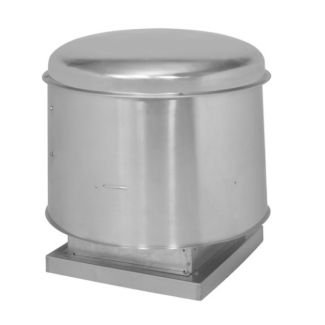 US Fan Belt Drive Down Blast Roof Exhaust Fan 10" Wheel 2054 RPM .33 HP 120/230 Volts, 1 PhaseModel: PV100F-.33-1P$1,415.91
US Fan Belt Drive Down Blast Roof Exhaust Fan 10" Wheel 2054 RPM .33 HP 120/230 Volts, 1 PhaseModel: PV100F-.33-1P$1,415.91 -
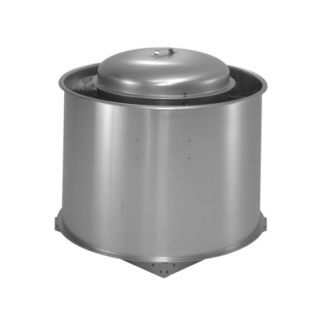 SAVE $682.08US Fan 10" Upblast Restaurant Grease Roof Exhaust or Wall Fan Belt Drive, 1/3 HP, 120/230 Volts, 1 PhaseModel: PNURG100F-.33-1PWas $2,197.81 Your Low Price Special Price $1,515.73
SAVE $682.08US Fan 10" Upblast Restaurant Grease Roof Exhaust or Wall Fan Belt Drive, 1/3 HP, 120/230 Volts, 1 PhaseModel: PNURG100F-.33-1PWas $2,197.81 Your Low Price Special Price $1,515.73 -
 SAVE $694.27US Fan 10" Upblast Restaurant Grease Roof Exhaust or Wall Fan Belt Drive, 1/2 HP, 120/230 Volts, 1 PhaseModel: PNURG100G-.5-1PWas $2,237.09 Your Low Price Special Price $1,542.82
SAVE $694.27US Fan 10" Upblast Restaurant Grease Roof Exhaust or Wall Fan Belt Drive, 1/2 HP, 120/230 Volts, 1 PhaseModel: PNURG100G-.5-1PWas $2,237.09 Your Low Price Special Price $1,542.82 -
 SAVE $704.31US Fan 10" Upblast Restaurant Grease Roof Exhaust or Wall Fan Belt Drive, 1/2 HP, 208 Volts, 3 PhaseModel: PNURG100G-.5-3PWas $2,269.45 Your Low Price Special Price $1,565.14
SAVE $704.31US Fan 10" Upblast Restaurant Grease Roof Exhaust or Wall Fan Belt Drive, 1/2 HP, 208 Volts, 3 PhaseModel: PNURG100G-.5-3PWas $2,269.45 Your Low Price Special Price $1,565.14 -
 SAVE $704.31US Fan 10" Upblast Restaurant Grease Roof Exhaust or Wall Fan Belt Drive, 3/4 HP, 120/230 Volts, 1 PhaseModel: PNURG100H-.75-1PWas $2,269.45 Your Low Price Special Price $1,565.14
SAVE $704.31US Fan 10" Upblast Restaurant Grease Roof Exhaust or Wall Fan Belt Drive, 3/4 HP, 120/230 Volts, 1 PhaseModel: PNURG100H-.75-1PWas $2,269.45 Your Low Price Special Price $1,565.14 -
 SAVE $712.20US Fan 10" Upblast Restaurant Grease Roof Exhaust or Wall Fan Belt Drive, 3/4 HP, 208 Volts, 3 PhaseModel: PNURG100H-.75-3PWas $2,294.87 Your Low Price Special Price $1,582.67
SAVE $712.20US Fan 10" Upblast Restaurant Grease Roof Exhaust or Wall Fan Belt Drive, 3/4 HP, 208 Volts, 3 PhaseModel: PNURG100H-.75-3PWas $2,294.87 Your Low Price Special Price $1,582.67 -
 SAVE $721.53US Fan 10" Upblast Restaurant Grease Roof Exhaust or Wall Fan Belt Drive, 1/4 HP, 120/230 Volts, 1 PhaseModel: PNURG100E1-.25-1PWas $2,324.92 Your Low Price Special Price $1,603.39
SAVE $721.53US Fan 10" Upblast Restaurant Grease Roof Exhaust or Wall Fan Belt Drive, 1/4 HP, 120/230 Volts, 1 PhaseModel: PNURG100E1-.25-1PWas $2,324.92 Your Low Price Special Price $1,603.39 -
 SAVE $721.53US Fan 10" Upblast Restaurant Grease Roof Exhaust or Wall Fan Belt Drive, 1/4 HP, 120/230 Volts, 1 PhaseModel: PNURG100E2-.25-1PWas $2,324.92 Your Low Price Special Price $1,603.39
SAVE $721.53US Fan 10" Upblast Restaurant Grease Roof Exhaust or Wall Fan Belt Drive, 1/4 HP, 120/230 Volts, 1 PhaseModel: PNURG100E2-.25-1PWas $2,324.92 Your Low Price Special Price $1,603.39 -
 SAVE $721.53US Fan 10" Upblast Restaurant Grease Roof Exhaust or Wall Fan Belt Drive, 1/4 HP, 120/230 Volts, 1 PhaseModel: PNURG100E3-.25-1PWas $2,324.92 Your Low Price Special Price $1,603.39
SAVE $721.53US Fan 10" Upblast Restaurant Grease Roof Exhaust or Wall Fan Belt Drive, 1/4 HP, 120/230 Volts, 1 PhaseModel: PNURG100E3-.25-1PWas $2,324.92 Your Low Price Special Price $1,603.39 -
 US Fan 10" Down Blast Roof Exhaust Fan Belt Drive, 2054 RPM, 1/3 HP, 208 Volts, 3 PhaseModel: PV100F-.33-3P$1,619.63
US Fan 10" Down Blast Roof Exhaust Fan Belt Drive, 2054 RPM, 1/3 HP, 208 Volts, 3 PhaseModel: PV100F-.33-3P$1,619.63
Benefits for Roof Exhausts Fans:
- Improved air quality: Reduced airborne contaminants and removal of stale air, fumes, and moisture
- Temperature control: Reduces heat buildup and help prevents equipment from overheating.
- Energy Efficiency: Reduces energy cost and supports sustainable practices for eco-friendly operation
- Enhanced employee morale and productivity : Boosts comfort, supports wellness, and leaves a lasting positive impression.
- Cost-effectiveness
Types of Roof Exhausts
Propeller Upblast Roof Exhausts
A type of axial fan designed to exhaust air and contaminants upwards and away from the roof, typically for industrial and commercial applications, featuring a propeller-like impeller and often a sealed motor compartment.
Centrifugal Upblast Roof Exhausts
Designed to draw air and fumes upwards and away from the building, commonly used in commercial kitchens and other applications where grease and particulate removal is crucial. They feature backward-inclined blades, a wind band for upward air discharge, and often include features like hinge kits for easy cleaning and external service disconnects
Centrifugal Downblast Roof Exhausts
Designed to exhaust air and fumes downwards, towards the roof, and is commonly used in commercial and industrial settings for general ventilation, especially where ductwork with higher static pressures is involved
Restaurant Grease Roof Exhausts
Spins the air at right angles to the motor using centrifugal force. Because of this misdirection of the air, a centrifugal exhaust fan is able to create a nearly unimpeded flow of air.
Hazardous Location Wall Exhaust
Designed to capture and contain grease, fats, and oils discharged from exhaust fans, preventing them from damaging the roof, attracting pests, and potentially causing fire hazards.
Frequently Asked Questions
When you are deciding which type of roof exhaust you need, you should consider these following factors: airflow requirements, space type, building size, climate, room type, energy efficiency and durability.
To determine the right size for an industrial roof exhaust fan, you need to calculate the required airflow in cubic feet per minute (CFM) based on the building's size, occupancy, and intended use, and then choose a fan with a CFM rating that meets or exceeds this requirements.
Industrial roof exhaust systems remove hot, stale, and potentially contaminated air from buildings, improving indoor air quality and temperature, and often utilize fans, ducts, and vents to facilitate airflow.
Give our customer service a call and we would love to help you get exactly what you need!





